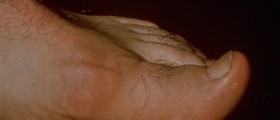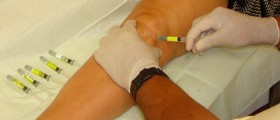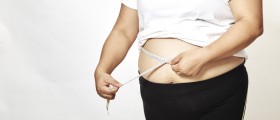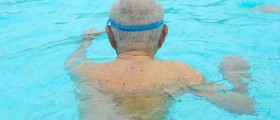
Gout is a medical condition which features with pain and swelling of the affected joint. It is considered an arthritic condition. In majority of patients the inflammation affects the big toe. However, other joints such as heels, insteps, ankles, knees, fingers, wrists and elbows can be affected as well. The condition predominantly affects men and is most common between the age of 30 and 60 and in older people.
Causes of Gout
Gout occurs due to excessive concentration of urate in the body. Urate also known as uric acid is a chemical compound normally found in the blood. It represents a waste product and is obtained from purines. Excess of this chemical compound is excreted via urine. Increased level of uric acid and subsequent occurrence of gout can be a consequence of improper elimination of uric acid by kidneys or excessive production of uric acid.
In case the level of uric acid is increased this excess forms tiny crystals which tend to collect in many tissues, predominantly around the joints. It does not mean that all people suffering from high levels of urate will develop gout. Certain factors also contribute to the disease. Gout most commonly occurs in older people (predominantly men), people whose diet is rich in purines, heavy drinkers, people with family history of gout, people who take certain medications such as diuretics and those who are overweight.
Symptoms of Gout
In gout, inflammation of joints is typically accompanied by severe pain, swelling and warmth around the affected joint. The nearby skin is red and shiny. People suffering from gout are prone to firm, white lumps which develop under the skin and are medically known as tophi.
Once the symptoms occur they tend to linger for a couple of weeks and may withdraw spontaneously or with certain medications. Some people experience only one attack of gout during their lifetime while others have to face occasional flare-ups.
Treatment for Gout
Patients are recommended to raise and rest the affected joint. They should not engage in any kind of vigorous physical activity. The affected joint is sometimes placed in a splint. Ice packs can be applied onto the affected area and held for approximately 20 minutes.
In some cases of gout patients are prescribed medications. The goal of medicamentous therapy is to ease the pain and reduce swelling. The most commonly prescribed medications for gout are non-steroidal anti-inflammatory medications. Furthermore, patients can be administered colchicine or corticosteroids.
Allopurinol is one more medication for gout. It is taken daily and it can successfully inhibit formation of urate and this way prevents gout. Additional preventive measures include identification and avoiding of all the potential triggers of gout. One should stay away from foods rich in purines and alcohol beverages.




-Symptoms,-Diagnosis,-Treatment_f_280x120.jpg)




-Symptoms,-Diagnosis,-Treatment_f_280x120.jpg)







Your thoughts on this
Loading...